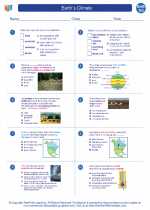Penetrating Power
Penetrating power refers to the ability of radiation to pass through different materials. It is an important concept in the study of radiation and its interaction with matter. Different types of radiation have varying penetrating powers, which can have significant implications for their practical applications and potential hazards.
Types of Radiation and Their Penetrating Power
There are three main types of radiation: alpha particles, beta particles, and gamma rays. Each type has different properties and penetrating powers.
Alpha Particles
Alpha particles consist of two protons and two neutrons, and they have a relatively low penetrating power. They can be stopped by a sheet of paper or human skin.
Beta Particles
Beta particles are high-energy, high-speed electrons or positrons. They have a moderate penetrating power and can pass through materials such as plastic, wood, and aluminum. However, they can be stopped by thicker materials, such as a layer of clothing or a few millimeters of aluminum.
Gamma Rays
Gamma rays are electromagnetic waves with the highest penetrating power. They can pass through most materials, including metal, concrete, and human tissue. Shielding with dense materials such as lead or concrete is required to effectively block gamma rays.
Applications and Hazards
The penetrating power of radiation has important implications for its use in various fields. For example, in medical imaging, the ability of gamma rays to penetrate the human body allows for the visualization of internal organs and tissues. However, this same penetrating power also presents potential hazards, as exposure to high levels of gamma radiation can be harmful to living organisms.
Study Guide
- Define penetrating power and its significance in the study of radiation.
- Compare the penetrating power of alpha particles, beta particles, and gamma rays.
- Discuss the practical applications of radiation with high penetrating power.
- Explain the potential hazards associated with radiation of high penetrating power.
- Describe the concept of shielding and its role in mitigating the effects of radiation with high penetrating power.
Understanding the concept of penetrating power is essential for anyone studying radiation and its effects. It is important to grasp the differences in penetrating power among different types of radiation, as well as the applications and potential hazards associated with high penetrating power.
.◂Earth Science Worksheets and Study Guides High School. Earth`s Climate

 Worksheet/Answer key
Worksheet/Answer key
 Worksheet/Answer key
Worksheet/Answer key
 Vocabulary/Answer key
Vocabulary/Answer key
 Vocabulary/Answer key
Vocabulary/Answer key
 Vocabulary/Answer key
Vocabulary/Answer key
